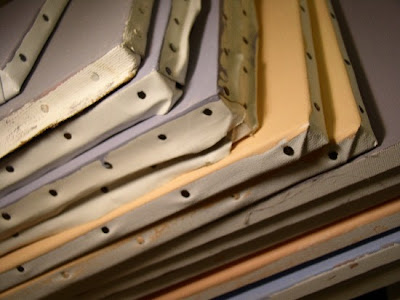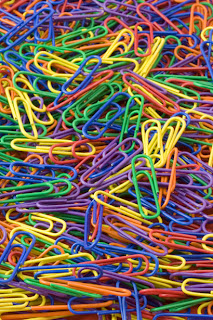Working in batch is a very effective way to save time. According to Mark Forster , the author three books about time management and personal organisation:
“One of the basic rules of time management is that it is much faster to group similar actions together. This rule is the basis of the batching which I advise in Do It Tomorrow.”
“One of the basic rules of time management is that it is much faster to group similar actions together. This rule is the basis of the batching which I advise in Do It Tomorrow.”
As already explained, working in batch will save you time. But there is more to it from a productivity standpoint.

Preparation time stays the same, whether you get ready for one action of several similar actions. Some examples will illustrate this:
- Getting your tools out to apply gesso on painting boards
- Switching on the computer and starting Windows and other programs
- Getting you contact list out to make phone calls
Tools and material required are the same for batched items: This is a principle developed by David Allen in his book Getting Things Done: The Art of Stress-free Productivity (also known as GTD). You should group your tasks by context. If you have a section of your to-do list which is called “@call”, you can make all your phone calls at the same time. (Other examples of context: “@errand”, “@studio”, “@computer”)
Easier to spot areas for improvement: When you repeat a task several times, it become easier to spot whether your process is efficient and how you could change it. Let’s put it this way: if you only perform a task once, it does not make the great difference if you don’t do it in an efficient way. If you repeat the task 10 times, you should at least notice its inefficiency, you will probably get irritated to the point that you will find a better way.
You get the advantage of training. If you repeat the same task over and over again during the batching process, you will get better at it and more efficient. In some cases, it also removes the fear you have to accomplish certain tasks. If you hate cold calling prospects, making all your calls in one go will ease the pressure. The first call is always the most difficult one.
Save money: When I prepare MDF boards with tinted gesso, I mix a large quantity of gesso tinted with acrylic paint in an old ice-cream tub. I then apply the gesso onto the panels I cut earlier until I use it all. I make sure that I cut plenty of panels to use the gesso I have prepared. If I am left with couple of bear panels, they just wait until I prepare the next batch. This way, I am not wasting any gesso.
What can you work in batch?
Things you do everyday: Leo Babauta from Zen Habits wrote in his article “Haiku Productivity: Limit Your Work Week”:
“Batch. If there’s something you do every day, consider batching it all into one day. For example, I was writing my Zen Habits posts every day, but now I do it all at once. And in truth, it saves me time. You could do that with almost anything. Same thing goes for something you do throughout the day, like email or phone calls. Consider batching tasks like that into one session per day.”
You get the advantage of training. If you repeat the same task over and over again during the batching process, you will get better at it and more efficient. In some cases, it also removes the fear you have to accomplish certain tasks. If you hate cold calling prospects, making all your calls in one go will ease the pressure. The first call is always the most difficult one.
Save money: When I prepare MDF boards with tinted gesso, I mix a large quantity of gesso tinted with acrylic paint in an old ice-cream tub. I then apply the gesso onto the panels I cut earlier until I use it all. I make sure that I cut plenty of panels to use the gesso I have prepared. If I am left with couple of bear panels, they just wait until I prepare the next batch. This way, I am not wasting any gesso.
What can you work in batch?
Things you do everyday: Leo Babauta from Zen Habits wrote in his article “Haiku Productivity: Limit Your Work Week”:
“Batch. If there’s something you do every day, consider batching it all into one day. For example, I was writing my Zen Habits posts every day, but now I do it all at once. And in truth, it saves me time. You could do that with almost anything. Same thing goes for something you do throughout the day, like email or phone calls. Consider batching tasks like that into one session per day.”
Small tasks
It is a good idea to batch small tasks and do them in one go at the end of the day, when your level of energy is lower.
Apply the batch method to the structure of the task
This idea is credited to Mark Forster who illustrates the point in his article “Similar Actions” with the most rational way to set-up a room for his seminar. I will use instead a personal and seasonal example for artists. It is time to prepare New Year cards for my contacts. Rather than buying cards (or having them printed), I decide to make them using a photograph of one of my paintings. The steps to get this done are:
- Print the legend on the back of the card (title of the work, dimension, my name, address of the website) using my computer and printer.
- Glue the photograph on the front of the card
- Write the card and the address on the envelope
- Put the stamp on the envelope
I could go through step 1 to 4 for the first card and start all over for the second card and so on. You realise that it would be much quicker to print all the legends on the cards at once (step 1), then to glue the photograph onto all cards in one go (step 2), etc.
Let’s list some activities that lay themselves well to the “working in batch” method.
Let’s list some activities that lay themselves well to the “working in batch” method.
Artist’s job
- Preparing board panels for oil painting
- Making small canvasses
- Cutting watercolour paper
- Varnishing paintings
- Framing Pictures (or get your frames made)
- Preparing labels for your works
Art business
- Buying in quantity. You know you will need ten canvasses of a given size during the months to come: buy them in bulk. You may find a good deal because you buy in quantity. You also save time because you don’t need to run to the art shop each time you want to start a painting.

Photograph: Petr Kratochvil
- Processing emails: One word of caution, here. Don’t wait until your inbox is overgrown and you can’t see the end of it. Processing emails in batch, once or twice a day in much more efficient than checking it every 10 minutes (unless you are waiting for a confirmation that you get this big commission…)
- Producing or writing postcards to collectors
- Updating your website with new paintings
- Writing posts for your blog
- Uploading photographs onto your computer
- Processing your expenses
These are only examples and I would love to hear about your own practice. Feel free to contribute and share your own experience by leaving a comment.
For this to work, you need some minimal organisation, so that you are ready to proceed when you decide to work on a batch of tasks. Here are two examples:
For this to work, you need some minimal organisation, so that you are ready to proceed when you decide to work on a batch of tasks. Here are two examples:
- Expenses: keep all your receipts in an envelope (one envelope per month if you get many receipts)
- Keep a list of works that you want to get framed. This way, you won’t forget any when it is time for your next trip to the framer
Related Articles
- “Similar Actions” by Mark Forster.
Further Reading
- Do It Tomorrow and Other Secrets of Time Management by Mark Forster

No comments:
Post a Comment